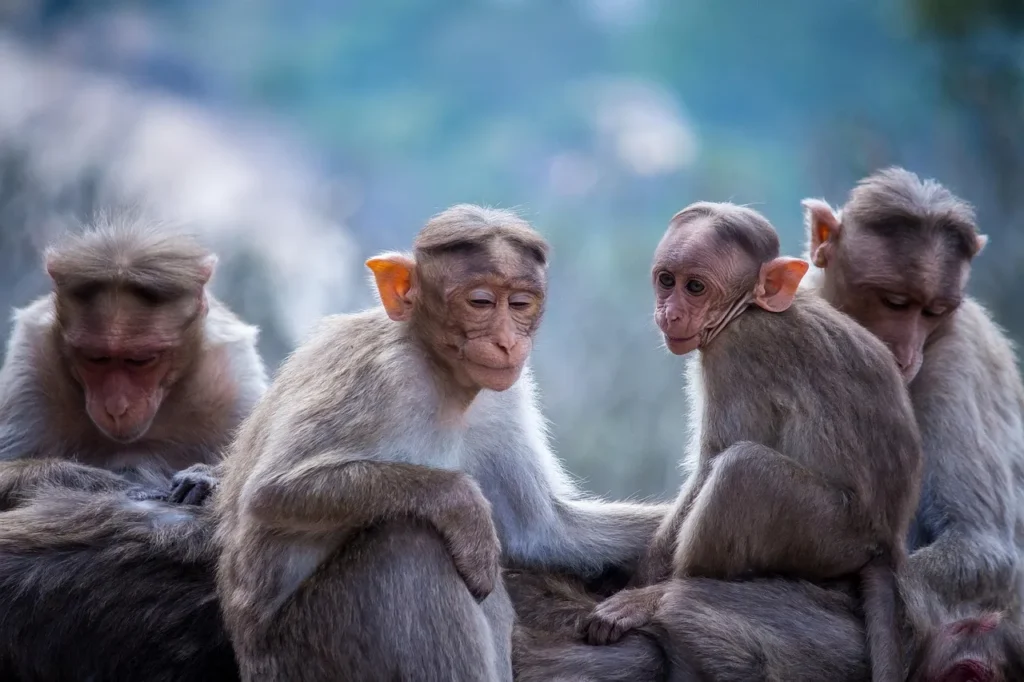Monkeys have fascinated humanity for centuries. As clever, social creatures, their behavior mirrors both the playful and cunning aspects of human nature. Across continents and cultures, monkeys feature prominently in stories, religious traditions, myths, and folklore—sometimes as tricksters, sometimes as wise guides, and sometimes as sacred beings. Their influence runs deep, not only in ancient legends but also in art, literature, and modern pop culture. This article explores the diverse roles monkeys play in global culture and folklore—and what their enduring appeal reveals about us.
Monkeys as Tricksters: The Mischievous Spirit

In many cultures, monkeys symbolize mischief and wit. As natural climbers and problem-solvers, they appear in folklore as cunning characters who outsmart adversaries, challenge authority, and stir up trouble—often with hilarious results.
- African Folklore: In West African tales, the monkey is known for tricking other animals, escaping danger through quick thinking, and using humor to overturn the powerful.
- Chinese Mythology: The legendary Monkey King, Sun Wukong, from the epic “Journey to the West,” is a celebrated troublemaker. Armed with magical abilities, Sun Wukong outwits gods and demons, symbolizing rebellion against unjust authority.
- Indian Folklore: Indian fables, including the ancient Panchatantra, often feature clever monkeys surviving through their wits and humor, teaching children valuable lessons about intelligence and resourcefulness.
Monkeys as Symbols of Wisdom and Protection
Not all monkey stories center on pranks—many traditions honor monkeys as wise, protective figures.
- Hinduism: The monkey god Hanuman is regarded as a symbol of strength, wisdom, devotion, and loyalty. Revered throughout India, Hanuman is celebrated for his courage in the Ramayana epic and worshipped as a divine protector.
- Japanese Culture: The three wise monkeys—見ざる, 聞かざる, 言わざる (see no evil, hear no evil, speak no evil)—are famous for their moral lesson. Statues of these monkeys are found at shrines, teaching virtues of humility, discretion, and moral conduct.
- Mayan Civilization: In Mayan art and myth, monkeys are connected to creativity, music, and artistic skill, often depicted as companions to gods or as symbols of fertility and protection.
Sacred and Spiritual Monkeys
Monkeys are honored in religious rituals, festivals, and sacred sites, reflecting their status as spiritual beings.
- Temples and Pilgrimages: Hanuman temples in India attract millions of visitors who seek blessings for strength and courage.
- Festivals: The annual Monkey Buffet Festival in Thailand celebrates monkeys as revered animals, with communities offering fruit and treats as gifts to local macaques.
- Symbolism in Buddhism: In Buddhist fables, the monkey can represent the restless mind, teaching lessons on mindfulness and self-control.
Monkeys in Folktales and Children’s Stories
Monkey characters appear in fairy tales and children’s stories all over the world, often as lovable heroes or sidekicks.
- Popular Books: Characters like Curious George have charmed generations by representing curiosity, kindness, and adventure.
- Fables and Fairy Tales: In many cultures, monkey tales are used to teach morals—such as the value of friendship, clever problem-solving, or respect for nature.
- Animated Films: Movies frequently portray monkeys as playful, helpful, or wise figures, capturing imaginations and shaping how children see animals.
Monkeys in Modern Pop Culture
The influence of monkeys extends into modern times:
- Mascots and Brands: Monkeys are commonly used as mascots and marketing icons, embodying fun and approachability for brands.
- Celebrations and Art: Art installations, comics, and social media often feature monkey imagery to express joy, cleverness, or rebellion.
- Symbolism: In psychology, monkeys represent a spectrum from innocent playfulness to unpredictable behavior—reminding us of our own instincts and emotions.
What Do Monkeys Really Represent?
Whether honored or teased, monkeys connect people to the deeper aspects of nature and humanity. They can symbolize:
- Intelligence and adaptability
- Mischief and joy
- Protection and loyalty
- Curiosity and creativity
- Spiritual strength and wisdom
By studying monkey myths and stories, we learn not only about animals but also about ourselves—our dreams, challenges, and values.
Final Thoughts: Lasting Impact of Monkeys in Culture
From ancient shrines to bedtime stories, monkeys have played a powerful role in shaping how we understand the world and our place in it. They remind us to celebrate both wisdom and playfulness, to honor tradition, and to embrace our natural creativity. Whether in folklore, religion, or popular media, monkeys continue to inspire laughter, respect, and wonder in cultures across the globe.
Frequently Asked Questions (FAQ)
Q: Why do monkeys appear in so many myths and folktales?
A: Their intelligence, human-like behavior, and adaptability make them compelling symbols for teaching lessons, exploring morality, and entertaining audiences.
Q: What does the “three wise monkeys” symbol mean?
A: It teaches the practice of avoiding evil by not seeing, hearing, or speaking it, embodying values of self-restraint and ethical living.
Q: Are monkeys considered sacred in any religion?
A: Yes! Hanuman is a major deity in Hinduism, and monkeys are revered in certain Buddhist, Mayan, and folk traditions.
Q: How do monkeys influence modern pop culture?
A: They represent curiosity, playfulness, and wisdom—popular in mascots, media, and viral memes.
